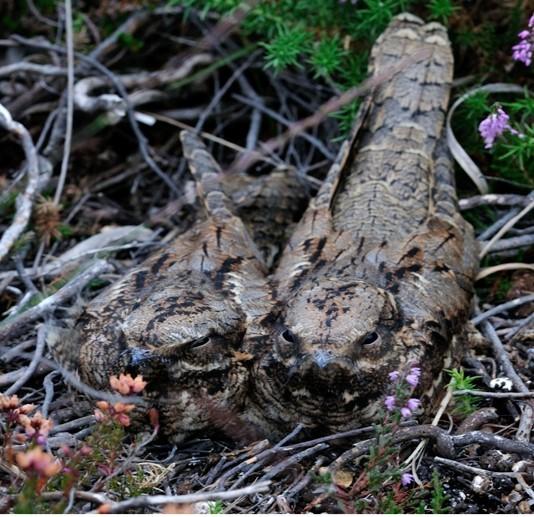
Our fascination with the nightjar goes back generations, with many references in folk law and poetry.
Its latin name, Caprimulgus, translates as ‘goatsucker’, deriving from an ancient myth that these birds suckled milk from goats. The superstitious blamed nightjar for milk running dry and even livestock blindness. Luckily, we now realise their sightings near livestock were purely because of the associated insects - nightjar are "crepuscular", feeding at dawn and dusk on moths and beetles in flight.
Their song is a mechanical churr and can be heard echoing around the quiet heath at dawn and dusk. Nightjars fly over 4000 miles all the way from Sub-Saharan Africa to breed on our heaths from May to September. What a feat of endurance!
Like so many strange creatures, they lie low in daylight, and are camouflaged to blend in to dry heathland scrub. They do not nest in trees – in fact they barely ‘nest’ at all - their similarly cryptic eggs are laid in a shallow scrape on the ground.
Because Nightjar are ground nesters, they are incredibly sensitive to disturbance by us and our dogs. If flushed off their 'nest' then predators can be alerted to the location and will feed on the eggs. Please stick to main paths and keep your dog in sight and on the path during bird breeding season (March-September).
Want to see and hear them for yourself? That’s great! There are often guided nightjar walks taking place across the Pebblebed Heaths during May and June. See Wild East Devon listings for more info.